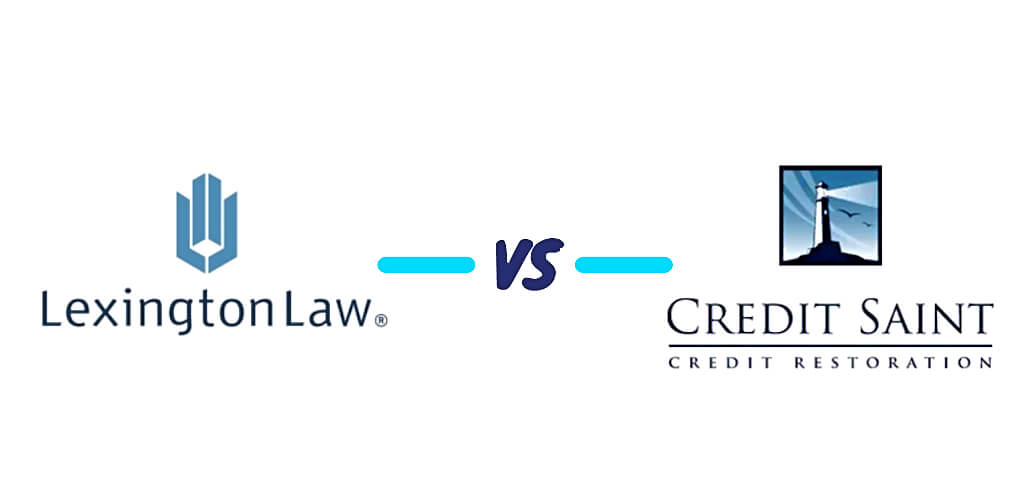How to Dispute Credit Report Errors?
Disclaimer: We offer completely free content to our users. However, articles or reviews may contain affiliate links and we may earn a commission. Learn more about how we make money.
Are you looking to dispute a credit report? Well, think back to your school days. You took a couple of tests. If there were grading errors, you probably approached your teachers to have the mistakes removed. The points mattered. They accurately reflected your academic standing.

In the real world, we are constantly tested and judged based on our creditworthiness. There are no teachers, but there are many tests. For example, every new credit account, be it a credit card or loan, is a time to prove yourself. The creditors submit data about repayments to major credit bureaus that sell the information to new creditors.
Imagine having to maintain an accurate report of millions of people across the country? No doubt, there will be mistakes. It’s estimated that about one in five persons has material errors in their records. You could be a victim. Since creditworthiness is as important as grades in a school, the bureaus are required to maintain accurate records of each person. They fix mistakes if they exist. We will detail how to dispute credit report entries in this comprehensive guide.
Consumer Protection laws have also come a long way. Procedures for fixing mistakes in reports are outlined in the Fair Credit Reporting Act. It’s guaranteed to be a boring read. Luckily, we have distilled its contents to come up with a step-by-step procedure to dispute credit report errors and win:
- Step 1: Receiving Copies of Reports & Scores
- Step 2: Checking Report for Errors
- Step 3: Gathering Evidence to Show Errors
- Step 4: Correcting Mistakes in Reports
- Step 5: Notify Original Information Furnishers
- Step 6: Wait for Dispute Notification and Outcomes
- Step 7: Responding to Failed Challenges
- Step 8: Watch for Reinsertions of Negative Information
- Bottom Line
Step 1: Receiving Copies of Reports & Scores
Many Americans don’t check their scores or reports. And it’s a grievous financial sin! Experts recommend checking reports a few times per year to confirm that everything is in order.
Reports are offered for free on Annualcreditreport.com by the three credit bureaus as mandated by federal law. While they must issue one free report yearly, the CRAs are providing weekly reports. It’s part of their contribution towards easing the financial pains brought about by the pandemic. Other places to get free reports include:
- myEquifax – Provides up to six free reports annually
- Experian Online Dashboard – Free report every 30 days
After exhausting the three sources of reports, it’s possible to pay for credit monitoring services from the CRAs or other third-party providers.
Scores reflect the information contained in reports. Negative entries such as collection accounts impact scores. Therefore, monitoring scores can equate to reviewing reports. And it’s easier because you only keep track of one number. Sources of free scores include:
- myEquifax Free FICO® Score
- Credit Sesame VantageScore 3.0
- Credit Karma VantageScore 3.0 – calculated from Equifax and Transunion reports
Step 2: Checking Report for Errors
This is a crucial step as it will determine the number of dispute candidates. It’s wrong to assume that all reports will have the same details. That’s because creditors pick and choose where to report information. It’s also not uncommon for two reports to be clean, while the third one will have errors. You always dispute credit report errors with the bureau that has the issue.
Now, Annualcreditreport.com will issue the electronic versions of the three reports almost instantaneously following the identity check. Use a computer or laptop for easier reviewing.
Here are some recurring mistakes to look out for:
- Wrong name and address on credit report: The first section of credit reports contains personal identifiable information such as the names and addresses. A wrongly spelled name may be a big deal or an honest mistake. It’s a big deal if there has been a case of identity theft. Misspelled names and wrong addresses can result in the infiltration of information belonging to someone else.
- Unknown accounts: The next section consists of open and closed accounts. Identity theft or mistaken identity can result in foreign accounts.
- Wrong account status: Open accounts may be noted as closed or vice versa. A paid-in-full account may be mistakenly reported as settled, which is a derogatory mark.
- Mistakes with the payment history: Creditors may report payments as late or delinquent for accounts in good standing.
- Missing information: Scoring algorithms take into account the outstanding balance and credit limit on revolving credit accounts. If this information is missing, it may impact scores.
- Duplicate accounts: Check if the same account appears multiple times on the report.
- Mistakes with the negative entry: For genuine negative items such as late payments, confirm that all the account details are correct. For instance, if the account’s open date or date of first delinquency is wrong, it may affect the length of the period before the entry is removed.
Step 3: Gathering Evidence to Show Errors
For successful disputes, it’s crucial to have supporting evidence. Luckily, you don’t have to rummage through your trash to find account statements. Instead, start by checking past emails or try to log in to online accounts. Some documents that can help during the dispute process include:
- Checks
- Receipts from lenders showing on-time payments
- Account & billing statements
- Account cancellation letters
- Debt collection letters
- Other supporting evidence.
Credit bureaus also request supporting identification as part of their identity check, such as:
- Government-issued identification card (state ID or driver’s license)
- Bank or insurance statements
- Recently issued utility bills.
Step 4: Correcting Mistakes in Reports
Disputing credit report errors in the basic sense involves notifying the credit reporting bureaus of the mistake, providing documentation, and asking for re-investigations. There are three ways to execute disputes:
Electronic disputings
Consumers can dispute credit reports online through the user portals provided by the three CRBs. The advantage of this method is that it’s quick and simple. Tracking cases is effortless, and the portals are quite interactive. It also cuts back on time spent writing or posting letters.
The biggest drawback is the lack of customization. That’s because the online portals tend to offer pre-selected dispute options that may be limiting if the challenge is complex. To dispute online, use the following links:
Sending out letters
The long-established way to send a dispute request has been By Mail. Some experts claim that it’s more effective and provides consumers with all the protections under the FCRA. The truth is that disputes will be successful as long as the inaccurate information cannot be substantiated.
Letters sent to the bureaus should contain the following key information:
- Personal information – Name, date of birth, & SSN
- Details of the questionable items, including why they should be investigated
- One copy of a government-issued ID backed with a recent utility bill or statement
- Any supporting evidence to prove that the challenge is not frivolous
- Copy of the credit file with the error highlighted
Experts recommend sending the letter by certified mail and requesting a delivery receipt. For an easier process, get started using the following sample letter from the FTC. Each bureau has also published its mailing guide:
Call-in disputes
The bureaus also provide an option to call in and speak to an agent who will facilitate the dispute process. Use the following phone numbers to dispute credit report errors:
- 866-349-5191 – Equifax
- 1 888 397 3742 – Experian
- (800)-916-8800 – TransUnion
The CRAs recommend that customers should obtain their respective credit reports before calling the support numbers.
Is email disputing supported? The bureaus don’t seem to accept email disputes.
Step 5: Notify Original Information Furnishers

Although it’s not absolutely necessary, consider contacting the original information furnisher. They supplied the information about the disputed item on the credit report. During the investigation process, creditors also have to confirm the accuracy of the entry after bureaus contact them.
If the information furnisher can begin their investigation sooner, it may increase the chances of having the negative item removed. Talk to the customer representatives first. If they ask for a formal letter, consider using the following Sample letter provided by the FTC.
If there are errors in collections accounts, consider disputing collections by writing a debt validation letter to the debt collectors.
Step 6: Wait for Dispute Notification and Outcomes
The next step is to wait for the CRAs to conduct their investigations. Bureaus contact the information furnishers primarily through automated verification systems. They may also call or write letters. Experian notes that most dispute investigations are complete within 30 days, while TransUnion states that they take two weeks.
Bureaus issue alerts via email or portal after fixing credit errors. You should see the challenge marked as updated, processed, or deleted. According to provisions of the FCRA, the CRAs should issue updated reports, and they typically do this within five business days of completing investigations. Then, on request, they can send the new reports to employers or credit companies that may have checked the reports recently.
Step 7: Responding to Failed Challenges
Dispute results are not always positive. Information furnishers may mark questionable entries as accurate even after supplying evidence proving the inaccuracy. There are various remedies availed by the bureaus:
- Launch disputes again: Consider submitting another dispute and, if possible, supply new evidence.
- Contact the information furnisher directly: When bureaus use automated verification systems, the system may likely use outdated information to confirm the entry. Ask the creditor to check and change their original records.
- Insert comments to explain negative items: The bureaus allow customers to add statements to each credit account. Customers can explain that they don’t agree with the entry or why they incurred the derogatory mark.
- Working with credit repair companies: For complex challenges, some consumers choose to seek the additional help of credit repair companies. Note that these companies don’t have any special process to remove negative items. They don’t guarantee that they will be successful in challenging previously verified entries. Before signing up, take advantage of their free consultations to ask if they can dispute credit report errors that you’re having trouble with.
Step 8: Watch for Reinsertions of Negative Information
Previously deleted information can be reinserted into credit reports. It usually happens if the original information furnisher did not respond within the allotted 30 days. When they finally respond, the bureaus can reinsert the previously deleted information provided that it’s correct.
It’s also essential to take an active role in monitoring reports going forward. There is no telling when new errors may appear. Take advantage of the free credit reports offered by various sources or consider signing up for a credit monitoring service. The services go for about $20 per month.
Bottom Line
The best reason to take an active role in disputing credit report errors is that it will lead to a point increase following the deletion of negative items. An error-free report is only fair as it reflects your actual credit standing.
It’s quite possible to dispute charges on credit reports without any help. Credit repair companies may do everything that you can do yourself and save a lot of time.






